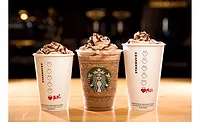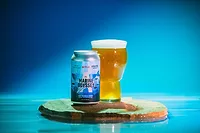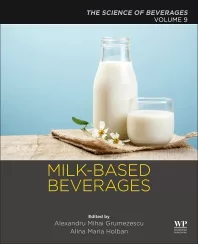Beverages inspire limited-edition food launches
Beverage, food brands can benefit from co-branding
Earlier in the year, General Mills Inc.’s Yoplait brand launched two beverage-inspired limited-edition flavors: Yoplait Original Peach Sweet Tea and Yoplait Light Margarita. Similarly, Mondelez International added Oreo Root Beer Float to its limited-edition line, complete with root beer and vanilla crème filling. The lineup also has included varieties inspired by limeade and strawberry milkshakes.
Moving from sweet to savory, condiments also are getting an extra kick from the beverage segment. Ravenswood Winery partnered with Jojo’s Sriracha, a small-batch producer of handmade chili sauces, to create Ravenswood Chili Sauce with Petite Sirah and Ravenswood Chili Sauce with Zinfandel.
This flavor innovation is consumer driven at times. In July, PepsiCo’s Frito-Lay division announced that Cappuccino was selected as one of the four finalists in its second Lay’s “Do Us A Flavor” contest. The contest invited fans across the United States to tell the company what flavors they think would be “yummy as a chip” for a chance to win a $1 million prize. The cappuccino-flavored chip idea landed among the Top 4 finalists from more than 14 million entries. The chips do not contain coffee or caffeine.
Even beverages themselves are finding inspiration from other beverages. This summer, H-E-B supermarkets announced the introduction of a sangria-flavored store-brand soda, available for a limited time. In March, burger chain Red Robin introduced its Mango Moscato Wine Shake, a new adults-only wine milkshake said to “give dessert-lovers and wine connoisseurs alike a reason to raise their glasses.”
Why might we be seeing this?
Flavor innovation is a strong attention getter. Custom consumer research conducted for Mintel’s August 2014 “Yogurt and Yogurt Drinks – US” report finds that flavor is the leading factor in yogurt and yogurt drink buyers’ purchasing decisions, trumping both price and brand. The same goes for research conducted about the cracker, ice cream and frozen novelties categories, to name a few.
The introduction of flavors can expand a category beyond its typical reach and even allow non-typical consumers entry into a new category. For instance, with Jelly Belly Candy Co.’s Draft Beer jelly beans, winner of the Most Innovative New Product Award in the non-chocolate segment at the 2014 Sweets & Snacks Expo, it can be 5 o’clock anywhere, and no refrigeration is required. (The confection is alcohol free.) Likewise, The Dannon Co. Inc.’s Dannon Light & Fit Greek Blends Caramel Macchiato Nonfat Yogurt might appeal to younger palates not accustomed to strong coffee flavors.
Health perceptions also can come into play, especially with fruit juice and tea-inspired flavors, such as frozen treat maker Brewla Inc.’s Peach Ginger + White Tea Specialty Brewed Bars, which benefit from the health halo of a light beverage.
How can beverage brands benefit?
Beverage brands can consider attaching their names to the non-beverage products for mutual benefit. The mention of a branded beverage as flavor inspiration adds a bit of legitimacy or authenticity to the flavored products.
Conversely, the beverage brand benefits from expanding reach beyond traditional beverage aisles and into other parts of the store, or to audiences that might not otherwise gravitate to the product. For example, Dr Pepper Snapple Group’s A&W brand appears in Walmart’s home baking aisle by co-branding with Betty Crocker for an A&W Root Beer Float Frosting and Root Beer Float Cookie Mix.
Product pairings also can be considered. Retailers might be encouraged to offer price promotions for the purchase of a bottle of whiskey placed alongside a bourbon-infused BBQ sauce or a ready-to-drink tea placed by a green-tea-infused chocolate bar.
Attention-getting, limited-time promotions might come in the form of the beverage brand reciprocating with a product inspired by the non-beverage offering for additional cross-category collaboration. For instance, a coffee-flavored cookie might be paired with a cookie-flavored coffee. Engaging social media campaigns also might inspire followers to further discuss this quasi flavor inception.
Looking for a reprint of this article?
From high-res PDFs to custom plaques, order your copy today!







